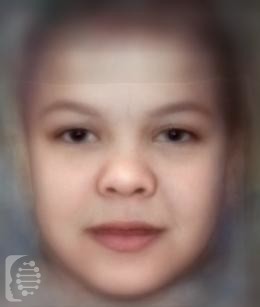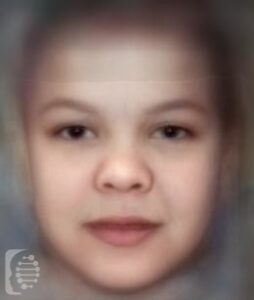What is Aspartylglucosaminuria?
Aspartylglucosaminuria is a progressive genetic disorder.
Children born with the syndrome are healthy at birth, and symptoms usually develop from the age of 2 years or older.
Symptoms tend to worsen with the onset of puberty.
This syndrome is also known as:
AGA Deficiency; AGU Aspartylglucosaminidase Deficiency; Aspartylglycosaminuria Glycoasparaginase; Glycosylasparaginase Deficiency
What gene change causes Aspartylglucosaminuria?
This rare disease is the result of a defect in the AGA gene which provides the instructions to produce the aspartylglucosaminidase enzyme.
As a lysosomal storage disease, neurological, skeletal, and connective tissue are all affected.
It is inherited in an autosomal recessive pattern. Autosomal recessive inheritance means an affected individual receives one copy of a mutated gene from each of their parents. Parents, who carry only one copy of the gene mutation will not generally show any symptoms but have a 25% chance of passing the copies of the gene mutations onto each of their children.
What are the main symptoms of Aspartylglucosaminuria?
Symptoms of the syndrome usually present post infancy, and from the age of 2-3 years. Children who appear to be developing typically may start to experience delays in speech leading to an eventual loss of speech already learned. A decline in cognitive ability is a major symptom and this decline worsens with the age of the individual.
Physical features of the syndrome include widely-spaced eyes, small ears, full lips, a short and broad nose, a square face, a large head, and rounded cheeks.
Other possible health conditions related to the syndrome include seizures, hypermobility, osteoporosis,s and respiratory infections.
Possible clinical traits/features:
Pes planus, Otitis media, Pathologic fracture, Pectus carinatum, Platyspondyly, Seizure, Autosomal recessive inheritance, Wide mouth, Diarrhea, Developmental regression, Limitation of joint mobility, Delayed skeletal maturation, Craniofacial hyperostosis, Coarse facial features, Dysostosis multiplex, Aspartylglucosaminuria, Umbilical hernia, Spasticity, Thick lower lip vermilion, Microcephaly, Scoliosis, Thickened calvaria, Spondylolisthesis, Spondylolysis, Sleep disturbance, Vacuolated lymphocytes, Splenomegaly, Recurrent respiratory infections, Arthritis, Abnormality of movement, Abnormality of metabolism/homeostasis, Abnormality of the outer ear, Abnormality of the ulna, Abnormality of the tongue, Broad face, Brachycephaly, Cataract, Carious teeth, Angiokeratoma corporis diffusum, Acne, Cerebral atrophy, Hoarse voice, Hernia, Short stature, Hepatomegaly, Hypoplastic frontal sinuses, Malabsorption, Delayed speech and language development, Gingival overgrowth, Beaking of vertebral bodies, Depressed nasal bridge.
How is it diagnosed?
To find out if someone has a diagnosis of Aspartylglucosaminuria, it is important to have a consultation and evaluation with a clinical genetic specialist. Specialists may also suggest specific genetic testing or other types of tests to help reach a diagnosis. FDNA’s AI technology can help speed up the diagnostic process by analyzing facial features and other health information.


